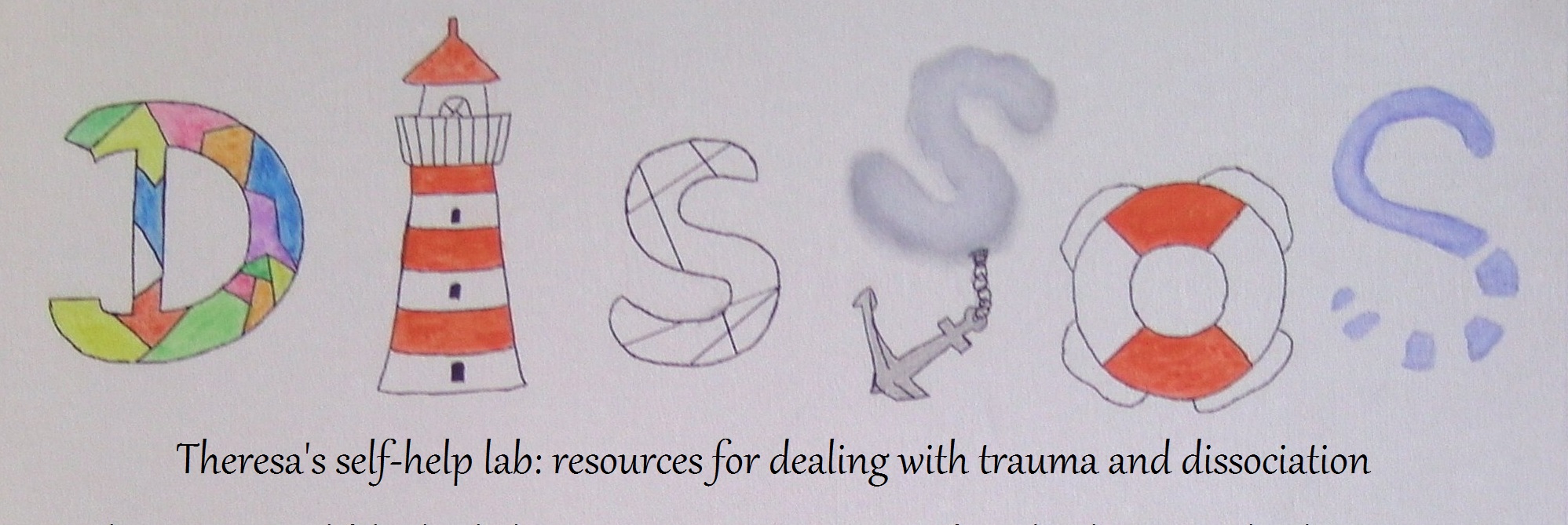[CN: We talk about patterns of neglect and injuries from not getting the help we deserved. The target audience are people who experienced torture and those who try to help them. It is painful to read when this has been your life experience. It might also trigger shame in those who tend to blame themselves […]
concerning integration
Integrating abuser-loyal Parts
Abuser-loyal parts often feel closely attached to abusers and hold warm feelings for them like love, gratefulness, awe etc. In the past, that was a helpful survival strategy because it has an appeasing effect. The efforts to please these people granted us more safety. We also split up the inner picture of abusive people in […]
Integrative Actions in Trauma Processing for DID
The concept behind trauma processing is usually to bring up the traumatic memory in a controlled setting, use an intervention to break up the fixed way in which it got stuck and then support the brain in re-organizing the memory in a new and more connected/integrated way. That is why you will find the term […]
Integrating our Body in Trauma Therapy
Trauma creates a disconnection from our body. Sometimes it shows in numbness for physical sensations and needs. We don’t feel hunger, cold or pain. It makes taking care of ourselves difficult and we might neglect our body. A lot of trauma survivors think of the body as their enemy. Something that needs to be avoided […]
In the Mirror of the Other (advanced)
Our own integration starts in the thinking mind of our therapist I wrote that almost exactly 3 years ago when talking about the therapeutic relationship. As I move into later phases of therapy it seems to me that this is one of the most profound things I have ever said. So please forgive […]
Recovery from trauma processing
Trauma processing is difficult on a number of levels. There is emotional stress when we look at scenes from the past, physical stress because we re-experience some of the stress responses, mental stress because our brain is trying hard to process the memory and figure out the necessary integrative actions and there is stress within […]
Earned secure attachment within a DID system
Everyone has attachment. It is how humans are built. Not everyone has secure attachment though. The 3 insecure attachment types are anxious/preoccupied, avoidant/dismissive and disorganized. The vast majority of people with DID have disorganized attachment when we look at the whole person. This presentation is based on some parts who are attachment seeking and anxious […]
The 3 Phases of Trauma Therapy 3: Integration
Trauma and DID therapists commonly agree on working with a 3-phase model. It describes an order in which to do work for the best, fastest and safest results. In an attempt to keep articles short we will share about the different phases in separate articles. The 3 phases are Stabilization Trauma Processing Integration It […]
Integrating Contradicting Parts
Dissociated parts are not all the same person at a different developmental stage. The functions and abilities of one complete person were separated into many pieces to cope with traumatic situations. And then parts kept developing and growing around the piece of functioning that they contain. Today, they are more than this one ability or […]
Blending dissociative parts (advanced)
Blending is an act where dissociative barriers are dissolved for a limited time so that the experience of one part mixes with the experience of another. They experience a temporary unity of self and they can move apart again intentionally, as they wish. During the first phases of our treatment we want to avoid blending […]
Halfway home – bridging the gap between worlds
When we work with our DID system, we can face situations where traumatized parts were cut off from the normal world. They have never been in contact with it and all they know is the world that the abusers created around them. Especially in organized abuse, the world that they know will have a limited […]
Epiphany #10: Paradox Lost
What is this? Some would insist it is a vase. Others would swear it is two faces. Neither of them is right. It is both a vase and two faces. It needs the existence of the vase to get two faces. It needs the faces to make a vase. Yet it is […]
